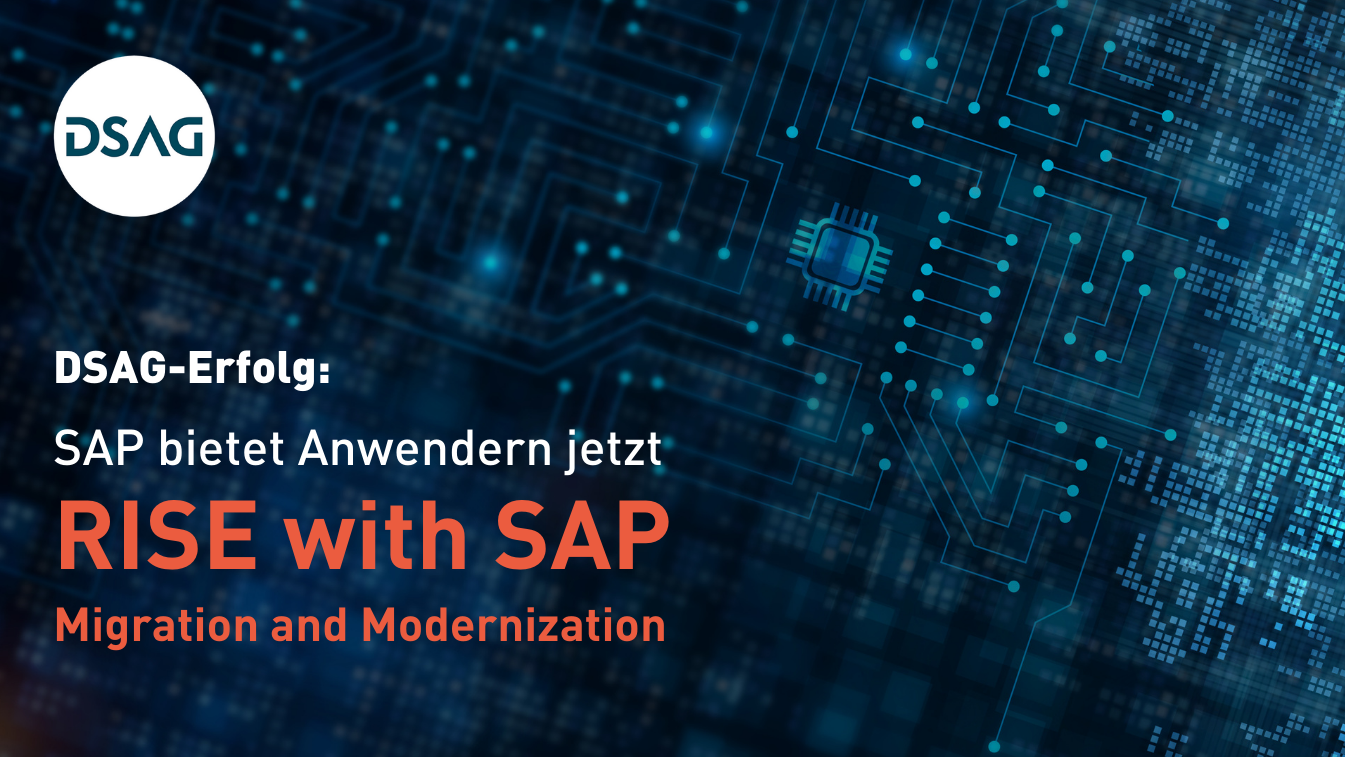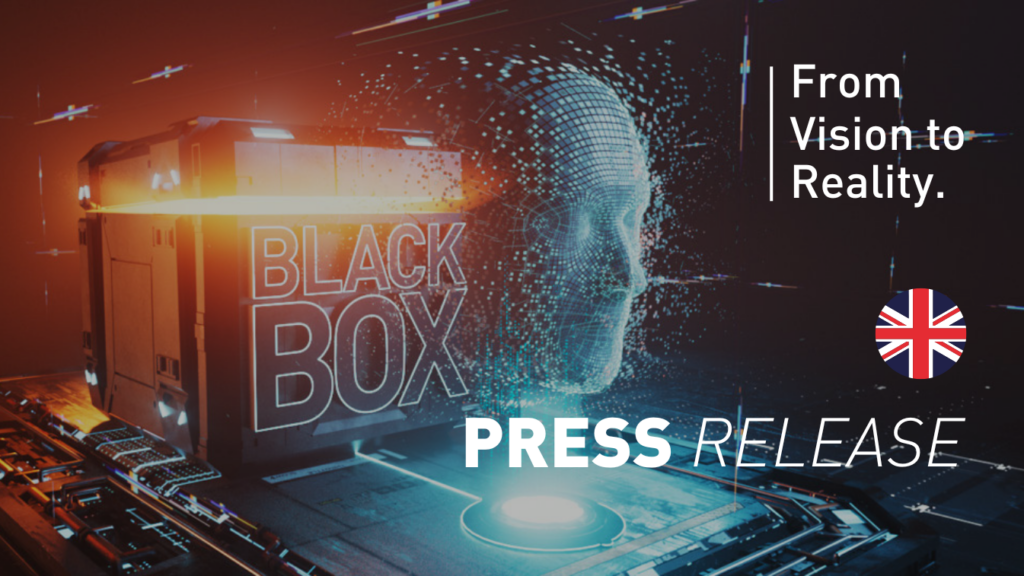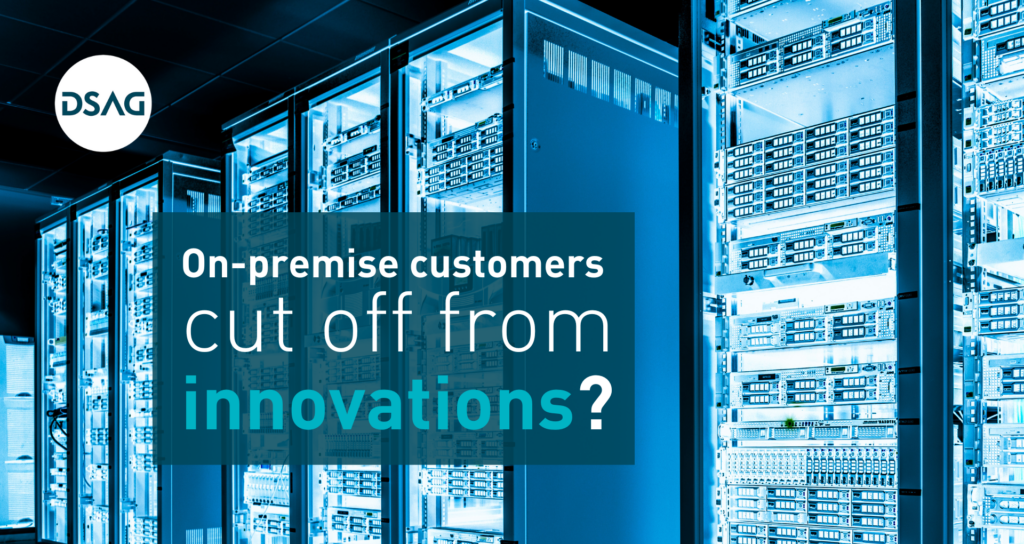Walldorf, February 6, 2024 – At the Technology Days of the German-speaking SAP User Group e. V. (DSAG) from February 6 to 7, 2024 at the Congress Center in Hamburg, pressing questions about current technological developments will be addressed and answered under the motto „Black Box – From Vision to Reality“. The hype surrounding generative artificial intelligence (AI) systems is currently attracting the attention of many companies, which are increasingly looking for suitable areas of application. From DSAG’s point of view, integrating AI into existing products to improve their functionality makes sense and can be helpful. However, there is still a world of difference between vision and reality or between sales and usable software.

Thanks to the quick and easy availability of ChatGPT, the topic of artificial intelligence (AI) has gained a lot of momentum since November 2022. However, from DSAG’s perspective, it often remains unclear what AI means in terms of specific applications. AI was already being used long before the hype surrounding generative AI and large language models (LLMs), for example to automate processes or to better identify cyber threats using machine and deep learning models. If AI is now increasingly integrated into existing processes and data-driven approaches are further developed, this will help to increase the competitiveness, profitability and resilience of companies in the long term.
SAP’s announcement in summer 2023 that future innovations such as AI will only be made available via RISE-with-SAP-Premium has unsettled many customers who have opted for S/4HANA Private Cloud or on-premises. However, making the technical integration of AI models dependent on a provider’s contractual construct is hardly feasible in the context of an overall IT architecture. „Offering AI only in a single cloud contract and operating model is also technically untenable, as large-language models can be implemented independently of this at any time,“ criticizes Sebastian Westphal, Chief Technology Officer of the German-speaking SAP User Group e. V. (DSAG).
Focus on „Business AI“
In this context, the announcement of the Generative AI Hub at the last SAP TechEd, which takes up this opening in technological terms, is therefore a positive development. The existing SAP AI Core and SAP AI Launchpad on the SAP Business Technology Platform (BTP) will be expanded to include this Generative AI Hub in order to control the connection to external LLM models, initially Open AI to be precise. Billing via a separate pricing model (AI units) is also planned.
The introduction of SAP Joule also highlights SAP’s new focus on „Business AI“. This voice-controlled AI assistant based on generative AI is intended to understand the business context and be directly integrated into the cloud portfolio for business-critical processes of user companies. In his keynote speech at the DSAG Annual Congress 2023, Thomas Saueressig, SAP Board Member for Product Engineering, had already specified that business processes in conjunction with AI would be the focus in future. According to the software manufacturer, it wants to increasingly rely on partners such as OpenAI.
„In principle, we welcome this strategic direction from SAP – especially in light of the dynamic developments surrounding the major models such as OpenAI, Bard, etc. However, there are still a few questions for us from a commercial, professional and technological perspective,“ says Sebastian Westphal. For example, transparent and proven billing models and metrics are needed. It must also be possible to prove that valid guidelines have been implemented and documented when AI makes process decisions. And from a technological perspective, it would be important to know how to handle the sensitive company information that is used.
A question of strategy
The end of maintenance for some central SAP solutions is clearly defined as 2027 and is therefore foreseeable. Many questions remain unanswered as to how future services and solutions will actually be implemented – and companies need functioning solutions before they can migrate. Even today, many products have not yet been fully developed and the roadmaps are full to bursting. For identity management for the central administration of users and authorizations, for example, this means that user companies that have previously used IDM as a central, cross-architecture tool will have to look for a new solution. This is because SAP Cloud Identity Management does not offer an identical scope of services and only addresses SAP landscapes in the long term. Consequently, a clear statement is needed as to which target solution SAP will support with corresponding migration scenarios and services, or whether there will be preferred partners for whom corresponding migration scenarios will be offered.
Harmonized Document Management across the SAP portfolio
The SAP Forms Service by Adobe solution as a successor product to Adobe Document Services is to be rated positively across the board. This closes the gap that was still being discussed at the DSAG Technology Days 2023. „SAP Forms Service by Adobe is a solution that meets the needs of many companies that have advocated for this alternative product, including through a corresponding DSAG position paper,“ explains Sebastian Westphal. However, one aspect of document management remains unresolved. For example, there is still no uniform harmonized document management across the entire SAP portfolio. There is a need to catch up, especially with acquired SAP solutions such as Ariba and SuccessFactors, but also newly developed products such as BTP and Cloud Application Lifecycle Management (ALM).
Rapid progress needed in data warehouse architectures
For SAP Datasphere and the SAP Analytics Cloud (SAC), the image of the black box is particularly vivid. The product visions fit. But in practice, it is not yet possible to map complex, comprehensive end-to-end business applications that companies urgently need. „In addition to the live connection of the SAP Analytics Cloud to all SAP products, this is also needed for non-SAP sources. Appropriate migration scenarios that take existing solutions into account and a license model for occasional users have also been necessary for years,“ says Sebastian Westphal.
When looking at the analytics architectures of the future, other providers have made considerable progress in the areas of data fabric/data mesh and modern data warehouse architectures. It is still unclear what concrete solutions can be expected from SAP Datasphere – and what the future holds for today’s SAP analytics solutions if these functions are provided natively by voice-based solutions in a much more user-oriented way.
Consistency across all BTP services
When it comes to BTP, user companies still lack a cross-service strategy and consistency across all BTP services and their interaction – in order to be able to integrate BTP even more clearly as a platform in company-wide, multi-level architectures as well as with the associated business services. For example, the monitoring and logging of the individual services is not yet standardized, and a consistent cloud identity management strategy is not yet a reality. In addition, a uniform access strategy from SAP support to the LoB services, a uniform overview of the BTP services including their availability in the price lists and the rapid integration of solutions such as Sig-navio as a genuine, fully integrated BTP service would facilitate the operational use of BTP. In summary, a uniform strategy must be developed, implemented and communicated for the interaction of lines-of-business (LoB) and BTP services. DSAG sees this as an important approach that needs to be expanded.
Security dashboard takes shape
The topic of security also plays an important role in connection with AI. AI not only supports the use of various functionalities. It also helps attackers to act faster, more efficiently and more automatically. The fact that SAP is now planning to provide a security dashboard for the SAP Analytics Cloud for medium-sized customers in parallel with the interfaces (API) and corresponding partner solutions is very welcome.
„SAP is thus fulfilling a long-standing DSAG requirement and supporting customers who do not already have an implemented, comprehensive monitoring infrastructure,“ says a satisfied Sebastian Westphal. What is still missing, however, is a clear answer from SAP regarding the provision of Solution Manager security tools beyond 2027. With ConfigValidation for checking the consistency of systems and system recommendations, there are initial signals from SAP that these functionalities will be provided in SAP Cloud ALM in the future.
Cloud all-in – Green IT: Quo vadis?
When using cloud services and setting up cloud-based infrastructures, it is becoming increasingly important to take the associated energy consumption into account. Even today, companies that procure data center services should make consumption a mandatory part of the tender so that „always-on scenarios“ and „reserved instances“ will soon be history. Accordingly, SAP’s cloud services must be designed to be much more flexible and controllable in the future. This applies, for example, both to the always-on mode of the hyperscaler-based Business Technology Platform services and to efficient data management between SAP cloud services.
Of course, this also requires corresponding SAP solutions. However, the fact that the Green Ledger is only provided for an additional charge and exclusively for RISE-with-SAP premium customers should be viewed critically in this context. „The one-sided pricing policy and discontinuation of the previous Sustainability Control Tower and Sustainability Footprint Management products encourages user companies to look for alternative solutions with long-term deployment scenarios,“ summarizes Sebastian Westphal. This is the wrong approach to really promoting sustainability.
DSAG demands at a glance
- The technical integration of AI models must be open and must not be made dependent on commercial contract models.
- Identity management requires a clear target solution from SAP with migration scenarios and services.
- Uniform Harmonized Document Management across the entire SAP portfolio.
- Comprehensive end-to-end business applications for SAP Datasphere and SAP Analytics Cloud as well as an extended license model for business users.
- Significant progress in the areas of data fabric/data mesh and modern data warehouse architectures.
- Security tools for Solution Manager beyond 2027. Initial signals from SAP that these functionalities will be provided in the SAP Cloud ALM target platform in the future can only be the beginning.
- Flexibly controllable cloud services to replace always-on scenarios and re-served instances.
- Energy consumption must be taken into account for cloud services and the development of cloud-based infrastructures.
- In the interests of sustainability, green ledgers must not be provided at extra cost and only for RISE-with-SAP premium customers.
Downloads
Das könnte Sie auch interessieren

DSAG-Erfolg für SAP-On-Premises-Kunden
Pressekontakt
Für Fragen und Interview-Wünsche stehen wir Ihnen gerne zur Verfügung. Bitte kontaktieren Sie uns!
Thomas Kircher
Deutschsprachige SAP-Anwendergruppe e. V. (DSAG)
+49-6227-35809-66
presse@dsag.de
Julia Theis
Deutschsprachige SAP-Anwendergruppe e. V. (DSAG)
+49-6227-35809-74
presse@dsag.de
Unsere PR-Agentur (DE und AT)
Flutlicht GmbH
+49-911-474-950
dsag@flutlicht.biz
Unsere PR-Agentur (CH)
Jenni Kommunikation
+41-44-388-60-80
info@jeko.com
Presseverteiler
Für eine Registrierung in unserem Presseverteiler schreiben Sie bitte eine formlose E-Mail an presse@dsag.de unter Angabe Ihres Vor- und Nachnamens, Ihrer Redaktion sowie Ihrer Kontaktdaten. Dann erhalten Sie zukünftig die DSAG-Pressemeldungen per E-Mail.




